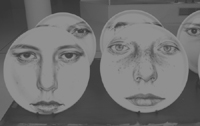After
Argo…
 |
| Suspense |
Felicity: “based on” a true
story…
Jason: Means events are
compressed, rearranged, or even invented, for the sake of a smoother narrative.
Felicity: To keep you asking,
“What happens next?”
Jason: Exactly. Now there’s
this “Argo” film. Based on a true story.
Felicity: Gripping. I saw it.
Jason: Well yes, suspenseful
it is. But when you read the original account of events, you
realize that the escapees cruised through the airport, except for their
passports being taken away for inspection at one point. The film cranked up the tension; showed them waiting
for their tickets to come through, negotiating three security points, being
subjected to a rigorous interrogation, their shredded photos being matched
against their passports in the next room, and the aircraft being chased down
the runway by police cars.
Felicity: Didn’t you think
that the police cars chasing an Airbus down the runway was taking tension to
its artificial Hollywood extreme?
_________________
Voice-over
Tension is achieved by
juxtaposed causal links, speed and convergence.
In a movie like Argo, what
you see is not what actually happened.
It’s a distortion of real
events.
Artists distort, writers
distort, filmmakers distort.
Anyone who tells stories
distorts.
But a closer to real account as
related by Joshua Bearman in Wired (2007) seems more interesting.
How might we fix this distortion
problem in Argo?
To tell the story truthfully,
but maintaining a frisson.
Not easy.
Ideally:
Use actual events to tell
what really happened.
And chronologically.
For example:
As they pass what was an
uneventful trip to the airport, each person muses separately on possible snags…
Psychological tension instead
of fabricated events.
Nevertheless, it was a
well-crafted suspenseful Hollywood version.
...












No comments:
Post a Comment